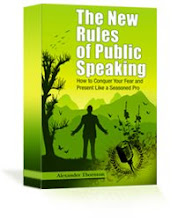Writing a Story? - Enjoy Yourself and Follow the Basic Rules
Fantastic news, you’ve finally taken the plunge, I know you wish you’d done it years ago, but a spouse, three kids, two dogs, a full time job etc, etc, ……aarrgghh!! Tell me about it! Better late than never is what I say.
Is it a novel, perhaps a short story? It could be your autobiography or even an article for a magazine/newsletter. Regardless of the content, nature or intensity of your writing make your self one promise …enjoy it! So many would be writers fall at the first hurdle, not through lack of talent, effort, commitment or endeavour. It is almost always a lack of planning that proves to be the major stumbling block.
The first and most important area to work on is structure. This brings together all the individual elements associated with your story in an organised manner, these include;
Your characters and their interaction/dialogue – conflict, humour, misunderstandings etc.
The overall theme of your story – good versus evil is usually a good one.
The major plot – that’s up to you!
Any sub-plots – skeletons in cupboards, vendettas, unrequited love, you get the idea
Location/setting/timescale – where and when? Time span – how long is your story? More important for short stories
A sting in the tail – keep them guessing right to the end!
Remember this is only a guide, the suggestions above outline some of the proven key points but it is your own individuality, creativeness and imagination that really counts.
Think about your favourite books/stories for a while and you will notice that apart from the subject matter, the structure, as outlined above is always the same!
Follow the basic guidelines;
1. Think of a situation or problem that needs to be resolved.
2. Relate the methods/actions taken etc. to resolve the situation.
3. Solve the problem – everyone lives happily ever after!
Very few writers can boast the ability to complete a short story/novel without some sort of structure, an often used example is:
1. A man gets stuck in a tree
2. Throw stones at him
3. Eventually get him down
Alternatively it could look something like this!
1. Your friend slips on some dog pooh, his false teeth fall to the ground, said dog runs off with teeth.
2. After recovering from fits of laughter you set off in pursuit of mad dog.
3. Promising never to tell a soul about the incident you eventually retrieve the teeth. Somehow you forget to tell him it was your dog!
Obviously there’s a lot more to it than this, but it really does help to start as you mean to go on. The formation of a structure for your story is essential, it may be nothing more complicated than the above example or possibly a far more elaborate blueprint.













